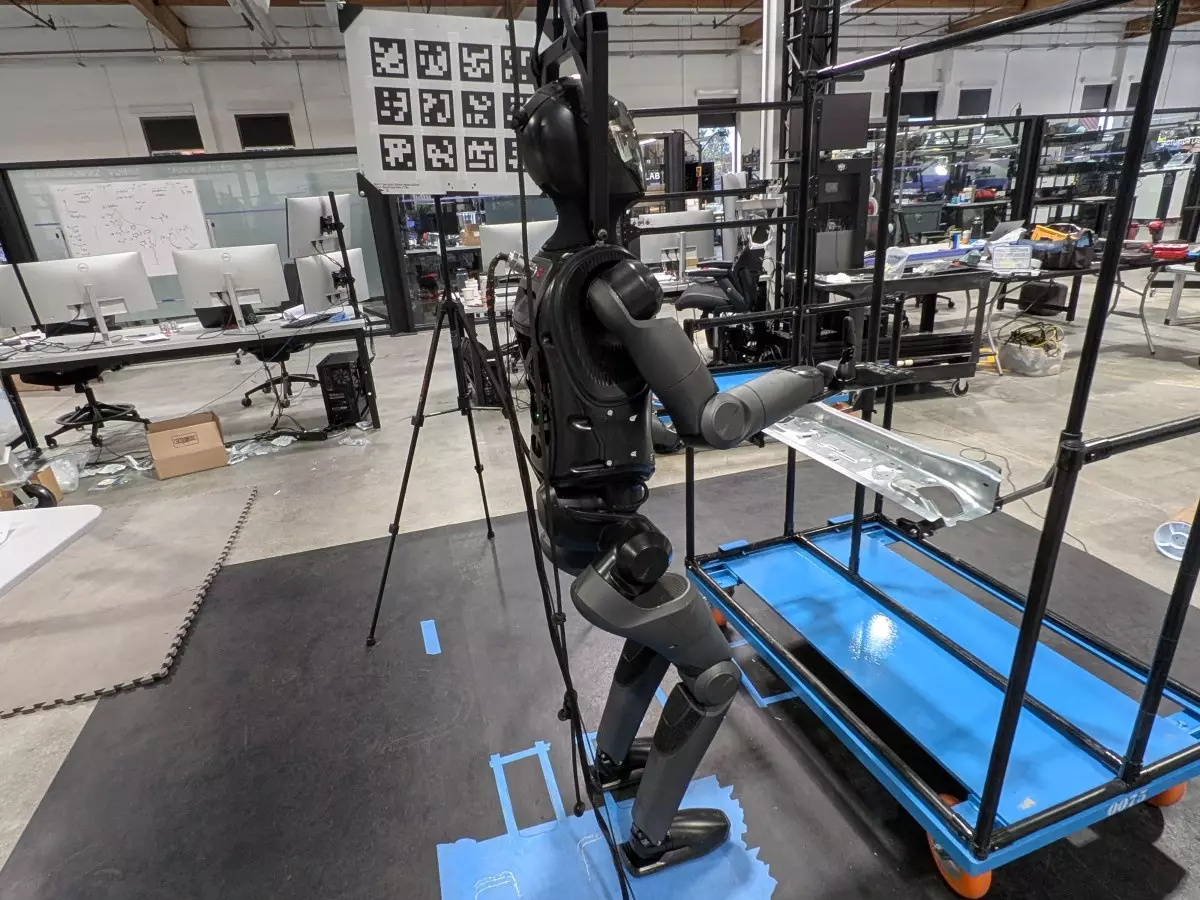In the fast-paced realm of technology, advancements can unfold at a breakneck speed, and the field of humanoid robotics is no exception. Over the past 16 months, Figure, a company dedicated to pioneering humanoid robotic technologies, has made significant strides. The transformation includes not only the physical presence of its headquarters but also massive shifts in the company’s operational capacity and ambitions. This article will explore the remarkable progress Figure has made, with a focus on the advancements in their latest model, Figure 02, and their plans for the future.
My recent visit to Figure’s Sunnyvale headquarters revealed a stark contrast to the workspace I last experienced. What once blended into the mundane landscape of Silicon Valley is now branded and bustling. The company has escalated its workforce to 130 engineers, as highlighted by CEO Brett Adcock during my visit. This influx of talent is a clear indicator of the company’s thriving development phase. Moreover, Figure is poised to move into a larger facility in the near future, underlining their rapid growth and investment, which totals an impressive $1.5 billion. This financial backing suggests not only confidence from investors but also a market belief in the potential of humanoid robotics.
A stroll through Figure’s workspace reveals an environment alive with innovation. The integration and testing area—referred to as “the back” by Adcock—functions as a pivotal site where various components of the robots are rigorously tested. This hands-on approach is crucial, especially as the company focuses on operating conditions reminiscent of real-world applications. In stark contrast to corporate environments where design and planning often overshadow practical testing, Figure’s engineers are deeply involved in modifying and enhancing robotic capabilities.
Prominently placed in the middle of the main office is a testing area for practical applications of their robots, with a notable emphasis on automotive assembly. Building on a recent partnership with BMW, Figure has begun deploying its robots in real-world settings, propelling them into environments where they can perform tasks such as moving components in an assembly line. The ongoing collaboration signals not just operational utility but also an adaptive strategy where the automotive sector is rapidly embracing humanoid robotics.
The Competitive Landscape of Humanoid Robotics
Figure is not working in isolation. The race to integrate humanoid robots into industries is heating up, as demonstrated by competitors like Boston Dynamics, Apptronik, and Tesla with its Optimus project. Each of these companies is defining their niche within the robotics landscape, whether it be consumer goods or household assistance. Figure’s decision to focus on the automotive industry illustrates a strategic choice based on existing demand and familiarity, as car manufacturers have been utilizing robotic solutions for decades. However, Figure’s long-term vision to expand into domestic spaces brings up interesting conversations about the nature and accessibility of humanoid robots.
Despite the promising trajectory of the automotive projects, challenges remain. The economic viability of consumer-oriented robots hinges on addressing pricing hurdles. Adcock mentions ambitious plans to have their robots priced below $20,000 in the future—a move that is essential for broad consumer acceptance. However, this ambition will require time, innovation, and a reduction in production costs to manifest.
One notable advancement presented during my tour was the considerable evolution of Figure 02 compared to its predecessor, Figure 01. This new iteration boasts a more refined design that improves functionality and aesthetics, integrating its components more seamlessly within the body. Gone are the exposed wires and cumbersome designs of earlier models, replaced by a more sophisticated internal architecture housing Nvidia GPUs, which are crucial for processing and performing complex tasks.
The demonstration of Figure 02 walking, a capability previously absent, marks a significant milestone in its development. Attempting to understand how much testing and calibration went into achieving this level of coordination emphasizes the intricate technical challenges engineers face. Additionally, the reliance on a gantry system during initial testing phases is a shrewd choice, ensuring safety and stability as the robots undergo strenuous assessments.
As Figure prepares to send its robots back into the hands of BMW at the start of the new year, the anticipation is palpable. This upcoming phase of fully operational deployment will not only showcase the practical utility of humanoid robots but also serve as a litmus test for their broader market viability. The road ahead for Figure represents both exciting advancements and substantial hurdles, with the integration of robots into both industrial and consumer spaces standing as both a possibility and a challenge. As the humanoid robotics sector continues to evolve, watching Figure’s progress closely will provide insightful perspectives on the future of this groundbreaking technology.

